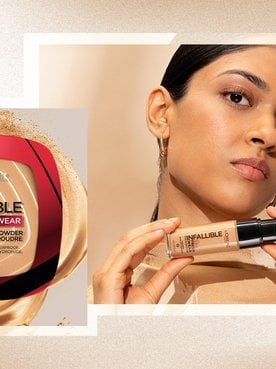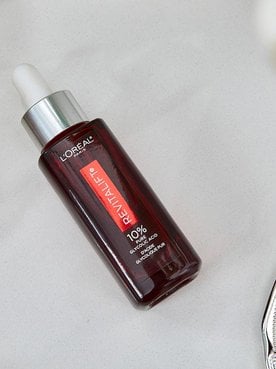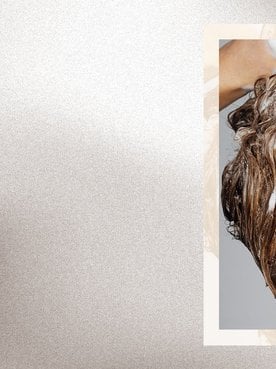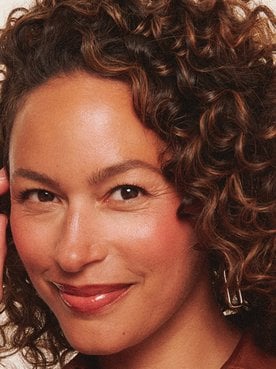The way you care for fine, thin hair is not the way you should care for thick hair. Fine hair refers to the density of each individual strand, whereas thin hair refers to how much hair you have. The two are often used interchangeably but they describe different things. According to the National Center for Biotechnology Information (NCBI), fine hair can be a bit more fragile than other hair types and when you identify with it, your hair care routine should reflect that.
To properly tend to your delicate strands, the top priorities should be fighting off damage and preventing breakage — two things that most people with fine hair know all too well. Ahead, we’re sharing more about how to build a hair care routine for fine hair, plus seven rules to follow.
Why Is My Hair So Fine and Thin?
Hair can be fine, it can be thin, or it can be a combination of both. As for why your hair is fine or thin, there are a number of different reasons. Some of the most common include the following:
Genetics
Being predisposed to fine or thin hair can be determined by genetics, which means in some cases it’s entirely out of your control.
Stress
According to the Mayo Clinic, telogen effluvium is temporary hair loss caused by stress or a change in your body. You’ll notice that your hair falls out as you brush or comb it, leading it to become thinner. If you think you’re experiencing this, consult with your doctor.
Remember that it’s normal to lose 50 to 100 strands of hair per day, per the American Academy of Dermatology (AAD). When someone is experiencing telogen effluvium, the hair loss is much more significant.
Hair Damage
If your hair is damaged from bleach, hair dye, hot tools, chemical treatments or a combination of these processes, that can lead to hair breakage, which can manifest itself as thinning hair. Your hair becomes thin not because it’s falling out at the root, but because it’s so damaged it’s breaking off.
What Is Fine Hair vs. Thin Hair?
As we mentioned, fine hair is small in diameter, thin hair is smaller in amount. The two terms are used interchangeably but they describe different things. You can have fine strands but a lot of hair and you can have hairs thicker in diameter but fewer of them. You can also have fine, thin hair (so few hairs that are also lean in size) which appears wispy and sparse.
If you have fine or thin hair, or a combination of both, the tips, below, can help you improve your hair care routine.
1. Use a Hair Care System That Enhances Hydration
A common side effect of fine hair is a flat, lifeless style and the proper way to counteract that is with volume and hydration. The L’Oréal Paris Elvive Hyaluron + Plump Hydrating Shampoo, Paraben-Free and L’Oréal Paris Elvive Hyaluron Plump Hydrating Conditioner, Paraben-Free contain hyaluronic acid to replump dry, dehydrated hair with noticeable bounce, body and shine. This duo is a great option for dry, damaged hair and it’s also a suitable choice for those with fine and thin hair that are looking to enhance volume and add body.
The system also includes a hydrating hair serum, the L’Oréal Paris Elvive Hyaluron + Plump Moisture Plump Serum, Paraben-Free, which locks in moisture and helps dry, fine strands to achieve a bouncier, softer style. Use it on damp hair or dry hair, between washes, to add moisture.
2. Embrace Dry Shampoo
Fine hair and thin hair are more susceptible to weigh down which means oils at the roots can easily overcome your style. While washing your hair more often may seem like the obvious choice, resist the urge because this can dry out your strands, leading to flat, lifeless and dehydrated hair.
According to the Cleveland Clinic, you should aim to wash your hair two to three times a week. That said, if you have an oily scalp or a rigorous workout regimen, you may need to wash your hair more often and if you have a dry, irritated scalp, you may need to wash less often.
If your aim is two shampoos a week and your hair gets greasy in-between, use dry shampoo, like the L’Oréal Paris EverPure Sulfate-Free Tinted Dry Shampoo for Blonde Hair for light hair or the L’Oréal Paris EverPure Sulfate Free Tinted Dry Shampoo for Brown Hair for dark hair to refresh your roots.
3. Be Mindful With How Much Conditioner You Use
According to the AAD, you should always apply conditioner after washing your hair. But, the placement of your conditioner is key, especially when you have fine hair. Apply the conditioner four inches from your roots to the ends. Applying it to your roots can weigh down your hair and make it look greasy.
4. Detangle With a Wide Tooth Comb
Fine hair is prone to tangles, which can lead to breakage. When your hair is tangled, reaching for your brush seems like the most logical choice but this can actually cause aggressive tugging that can lead to hair breakage. Instead, use a wide tooth comb to remove tangles because the wide space between the teeth offer more control and are gentler on the hair.
Additionally, if you have fine hair, sleep on a satin or silk pillowcase to reduce friction on your strands.
5. Always Use Heat Protectant
Heat protectant shields your hair from the scorching temperatures of your hot tools. Not only is it best to use hot tools, like your curling iron and blow dryer in moderation, but when you use them, it’s also important that you apply heat protection to your hair first.
Pre blow-drying, go for a leave-in, like the L’Oréal Paris EverPure Sulfate-Free Weightless Blow Dry Primer, Heat Protectant to smooth your hair and protect against heat up to 450 degrees. If you’re planning to straighten or add some curls to your dry hair, use a leave-in, like the L’Oréal Paris Elvive Dream Lengths Frizz Killer Serum Leave-In for heat protection and frizz control.
6. Incorporate a Weekly Hair Treatment
In an effort to prevent damage, add a weekly treatment to your hair routine. Heavy treatments like deep conditioners and masks can weigh down fine hair, so go for something lightweight. The L’Oréal Paris Elvive Hyaluron + Plump Flash Hydration Wonder Water, Sulfate-Free is an eight-second hair treatment with a water-like consistency that moisturizes and detangles hair without weigh down.
Apply it to wet hair, after your shampoo and massage it into your hair before rinsing it out.
7. Be Mindful of Your Hairstyle
Your hairstyle may be calling attention to your fine hair. If you have fine hair, stay away from layers because they take away volume. A wavy lob is a good haircut for thin hair or fine hair because the shorter length gives the illusion of density while the wavy texture makes the hair appear thicker.
Next: Is Sleeping With Wet Hair a Bad Idea?
Photographer: Chaunte Vaughn, Art Director: Hannah Packer, Creative Producer: Becca Solovay, Digital Tech: Erik Dalzen, Photo Assistant: Sam Kang, Makeup Artist: Jonet Williamson, Hair Stylist: Mirna Jose, Hair Assistant: Keila Rivera, Wardrobe Stylist: Alexis Badiyi, Wardrobe Assistant: Jazmine Alzado, Model: Zlata Semenko







